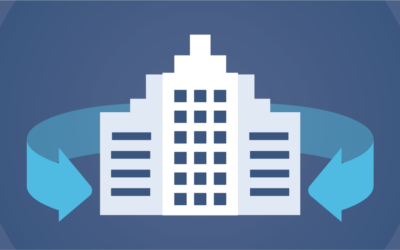In industrial settings, chilled water systems are essential for maintaining optimal operating conditions and ensuring the efficiency of various processes. However, these systems can also be significant energy consumers, leading to high operational costs. Fortunately, there are numerous low-cost and no-cost strategies that facilities can implement to reduce energy expenses associated with chilled water systems. This article explores practical and effective methods to enhance energy efficiency without requiring substantial capital investments.
Invest in Regular Chiller Maintenance
Scheduling routine inspections and upkeep can prevent minor issues from escalating into major problems that could disrupt operations and incur significant repair costs. These maintenance activities are relatively low cost and include:
- Regularly cleaning the evaporator and condenser tubes to maintain optimal performance. Dirt, scale, and biological growth on heat exchanger surfaces reduce heat transfer efficiency, forcing the chiller to work harder and consume more energy.
- Proper refrigerant levels are crucial for efficient chiller operation. Both overcharging and undercharging can lead to reduced efficiency and increased energy consumption. Regularly check and adjust refrigerant levels to maintain optimal performance.
- Regularly lubricating moving parts and inspecting mechanical components for wear and tear can prevent efficiency losses. Replace worn parts promptly to maintain smooth and efficient operation.
- Ensure that temperature sensors are properly calibrated and provide accurate readings. Inaccurate sensor readings can lead to incorrect control settings, causing the chiller to operate inefficiently.
Explore System Insulation
Improving the insulation of pipes, valves, and other components in the chilled water system is another a low-cost way to reduce energy losses. Poorly insulated pipes can lead to temperature gains in the water, causing the chiller to work harder to maintain the desired temperature. Proper insulation also prevents condensation on chilled water pipes, which can cause water damage and lead to mold growth. Some steps to improve insulation include:
- Conduct an Insulation Audit: Start by conducting a thorough audit of the site’s current insulation. Identify areas where insulation is lacking, damaged, or insufficient. Pay special attention to pipe joints, valves, and fittings, as these are common points of thermal loss.
- Insulate Ductwork: In addition to pipes, consider insulating any ductwork associated with your chilled water system. This helps to maintain air temperature and reduces the load on facility cooling equipment.
- Use Reflective Insulation: In areas where pipes are exposed to direct sunlight or other heat sources, consider using reflective insulation to deflect heat and further reduce thermal gain.
- Implement a Maintenance Schedule: Establish a regular maintenance schedule for inspecting and maintaining insulation. This ensures that any issues are promptly addressed, and that insulation continues to perform effectively.
Focus on Heat Rejection Efficiency
Cooling towers play a crucial role in the efficiency of chilled water systems. Ensuring that cooling towers are well-maintained and operating efficiently can lead to significant energy savings without making significant capital investments.
- Clean the fill media, check the water distribution system, and ensure that cooling tower fans are functioning correctly. Efficient heat rejection reduces the condenser water temperature, improving chiller performance.
- Monitor and adjust cooling tower setpoints to optimize performance based on wet bulb temperatures. Lowering the condenser water temperature can significantly enhance chiller efficiency.
Evaluate Free Cooling
Free cooling is a method of using low external air temperatures to assist in the cooling process, reducing the load on mechanical chillers. When external temperatures are low enough, the chilled water system can use this cool air directly, bypassing the need for mechanical cooling. This lower cost method of energy savings is most feasible in regions with significant temperature variations between seasons or consistently cool climates.
Optimize Pump Operation
Pumps are responsible for circulating chilled water throughout the system, and their performance directly impacts the system’s energy consumption. A few lower cost ways to ensure pump efficiency include:
- Flow Control Valves: Install flow control valves at critical points in the system to help regulate and maintain consistent flow rates. This prevents over-pumping and ensures that pumps operate efficiently.
- Regular Inspections: Conduct regular inspections of pumps to identify any signs of wear, leaks, or other issues that could impact efficiency. Addressing these issues promptly can prevent energy losses and maintain optimal performance.
- Cleaning and Lubrication: Keep pump components clean and well-lubricated to ensure smooth operation. Regular maintenance tasks such as cleaning filters and lubricating bearings can prevent unnecessary energy consumption due to friction and blockages.
Enhance Control Strategies
Advanced control strategies are crucial for enhancing the performance and efficiency of chilled water systems. Effective control systems not only improve energy efficiency but also ensure the reliability and longevity of the equipment. While there are many solutions at various price points, the lower and no-cost options typically include:
- Solutions Utilizing Adaptive Control: Adaptive control systems can learn from the operational history of the chilled water system and adjust control strategies dynamically. This means the system can adapt to changing conditions, such as variations in occupancy, weather changes, and seasonal demand fluctuations, ensuring optimal performance at all times.
- Using Night Setback: During periods of low occupancy or when cooling demand is reduced, adjust setpoints to allow the system to operate at lower capacities.
- Implementing Demand-Controlled Ventilation: Adjust ventilation rates based on occupancy or process requirements to reduce the load on the chilled water system.
- Optimizing Setpoints: Regularly review and adjust chiller setpoints based on actual cooling requirements. Avoid setting temperatures lower than necessary, as this increases energy consumption. Implementing dynamic setpoint control based on real-time conditions can enhance efficiency. Each degree Fahrenheit increase can result in a 2-4% reduction in chiller energy consumption.
- Resetting Condenser Water Temperature: Adjusting the condenser water temperature setpoint in response to ambient conditions can improve chiller efficiency. Lowering the temperature setpoint during cooler weather can enhance performance and reduce energy use.
Monitor and Analyze System Performance
Continuous monitoring and analysis of the chilled water system can help identify inefficiencies and opportunities for improvement with a smaller budget:
- Performance Analytics: Use advanced data analytics to continuously monitor and analyze the performance of the chilled water system. Identify trends, detect anomalies, and generate insights that can inform maintenance decisions and system upgrades.
- Benchmarking and Reporting: Regularly benchmark system performance against industry standards and historical data. Generate detailed reports that highlight areas of improvement, track the impact of implemented measures, and provide actionable recommendations for further optimization.
Educate and Train Staff
Ensuring that facility personnel are knowledgeable about energy-efficient practices is crucial for sustaining improvements. Importantly, fostering an energy-focused culture is nearly zero cost and can include:
- Conducting Training Sessions: Provide training on best practices for operating and maintaining the chilled water system.
- Encouraging Reporting: Create a culture where staff are encouraged to report issues and suggest improvements.
- Appointing Energy Efficiency Champions: These champions within the facilities team are responsible for promoting best practices and encouraging their peers to adopt energy-saving behaviors. Recognize and reward these champions for their contributions.
Reducing energy expenses associated with chilled water systems does not always require substantial investments. By implementing low-cost and no-cost strategies such as optimizing chiller settings, improving insulation, conducting regular maintenance, and educating staff, industrial facilities can achieve significant energy savings.



